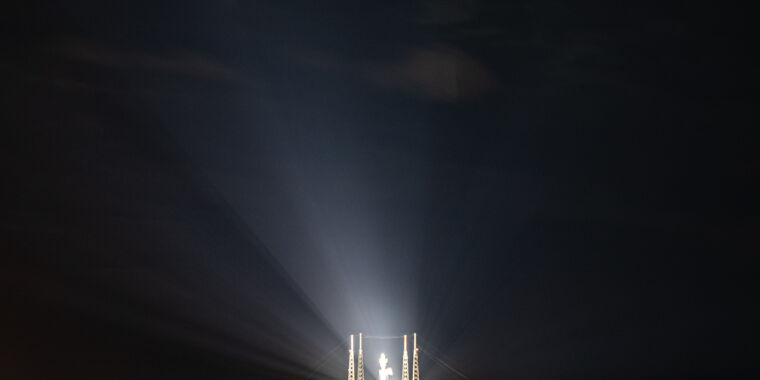
The countdown clock ticked steadily on Friday night for a Falcon 9 rocket and reached T-2 seconds before the launch of a valuable Global Positioning System satellite was aborted. That was the second consecutive time, in just two days, that a Falcon 9 launch was called off with mere seconds left in the countdown.
An “unexpected ground-sensor reading” triggered an automatic abort of a Starlink launch on Thursday at T-18 seconds. And on Friday evening, according to SpaceX founder Elon Musk, “an unexpected pressure rise in the turbomachinery gas generator” caused the scrub. The turbomachinery in this instance pressurizes gas entering the “gas generator,” which in turn is a small engine that powers the larger Merlin rocket engine.
So what is going on? SpaceX has now launched its Falcon 9 rocket more than 90 times, and before this week, recent delays have almost exclusively been due to weather rather than technical problems with the rocket or its ground systems.
Musk apparently wants to know as well. After the back-to-back scrubs, he took to Twitter to announce that he would visit the company’s two launch sites in Florida: one at Cape Canaveral Air Force Station (the site of Friday night’s scrub) and one at Kennedy Space Center (where the Starlink mission awaits a second launch attempt).
Visiting next week
Musk would like SpaceX to increase its cadence such that it can reach 48 launches in 2021, which would more than double the company’s previous record for total number of missions in a single year. Technical scrubs like the ones this week would prevent this. Achieving frequent launches will require smooth operations.
“We’re doing a broad review of launch site, propulsion, structures, avionics, range & regulatory constraints this weekend,” Musk tweeted. “I will also be at the Cape next week to review hardware in person.”
This visit is notable, because Musk is now spending most of his time in Boca Chica, Texas, working on the company’s next-generation launch system, Starship. Now, he will be returning his focus to the Falcon 9 for a time.
This will matter, because Musk truly serves as both the chief executive of SpaceX as well as its chief engineer. He leads the discussion at all senior technical meetings, whether in his executive conference room at the SpaceX factory in Hawthorne, California, or a larger room in Boca Chica.
He has always been, and remains, the animating force behind SpaceX’s technical excellence. When Musk is somewhere, things get done. He is constantly pushing forward, asking why things cannot be done faster, or better, or cheaper. He is good at motivating employees to meet seemingly impossible deadlines. So by coming to Florida, Musk is not-so-subtly reminding his launch team of his expectations as well as lending his technical expertise to the myriad challenges of launching rockets on time.
SpaceX should have its next opportunity soon. The company’s Starlink-12 mission, now delayed twice (once for poor weather and once due to the ground systems issue) is scheduled to launch on Monday, October 5, at 7:46am EDT (11:46 UTC). We will watch—with great interest.
Listing image by Trevor Mahlmann for Ars Technica
https://arstechnica.com/?p=1711519

